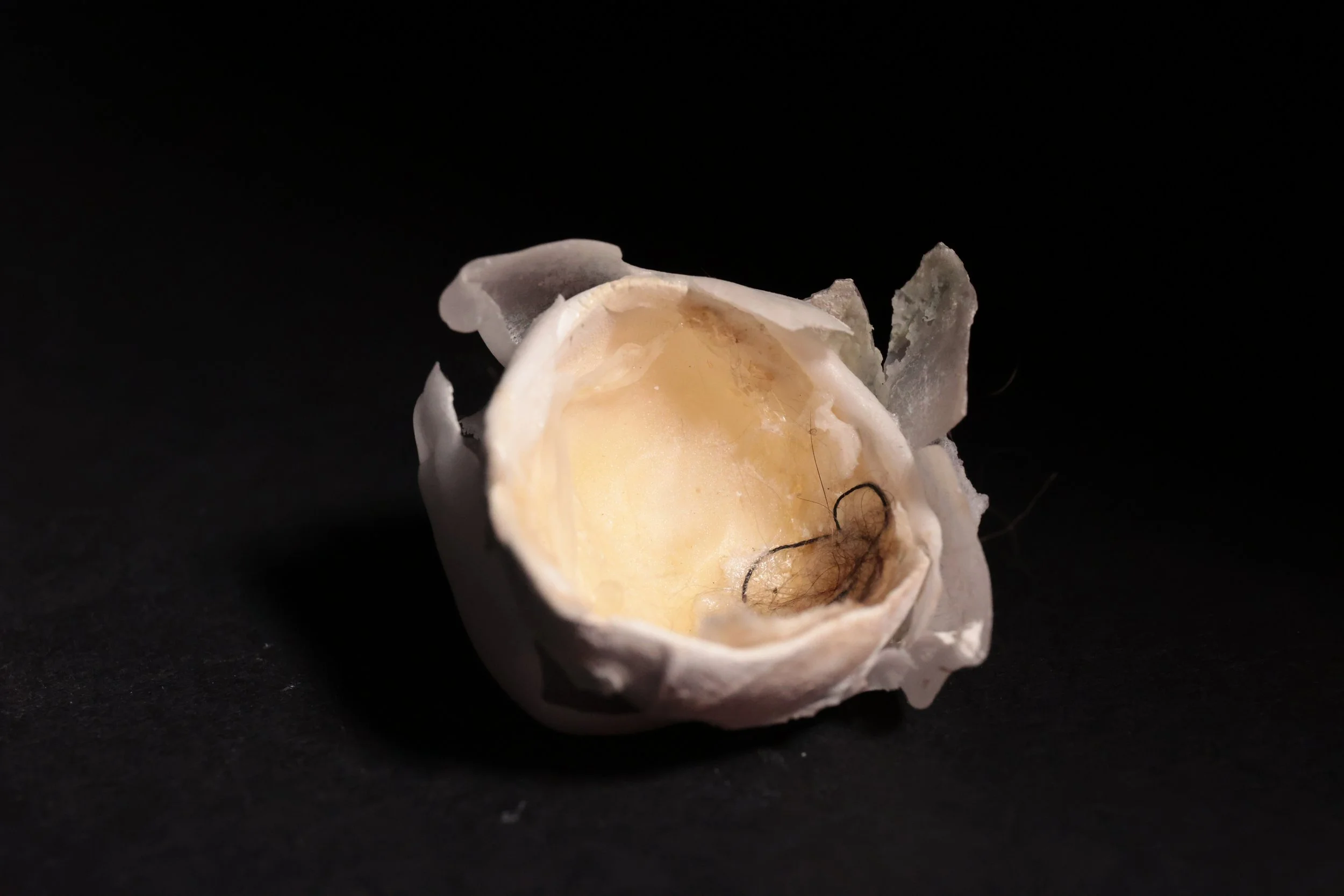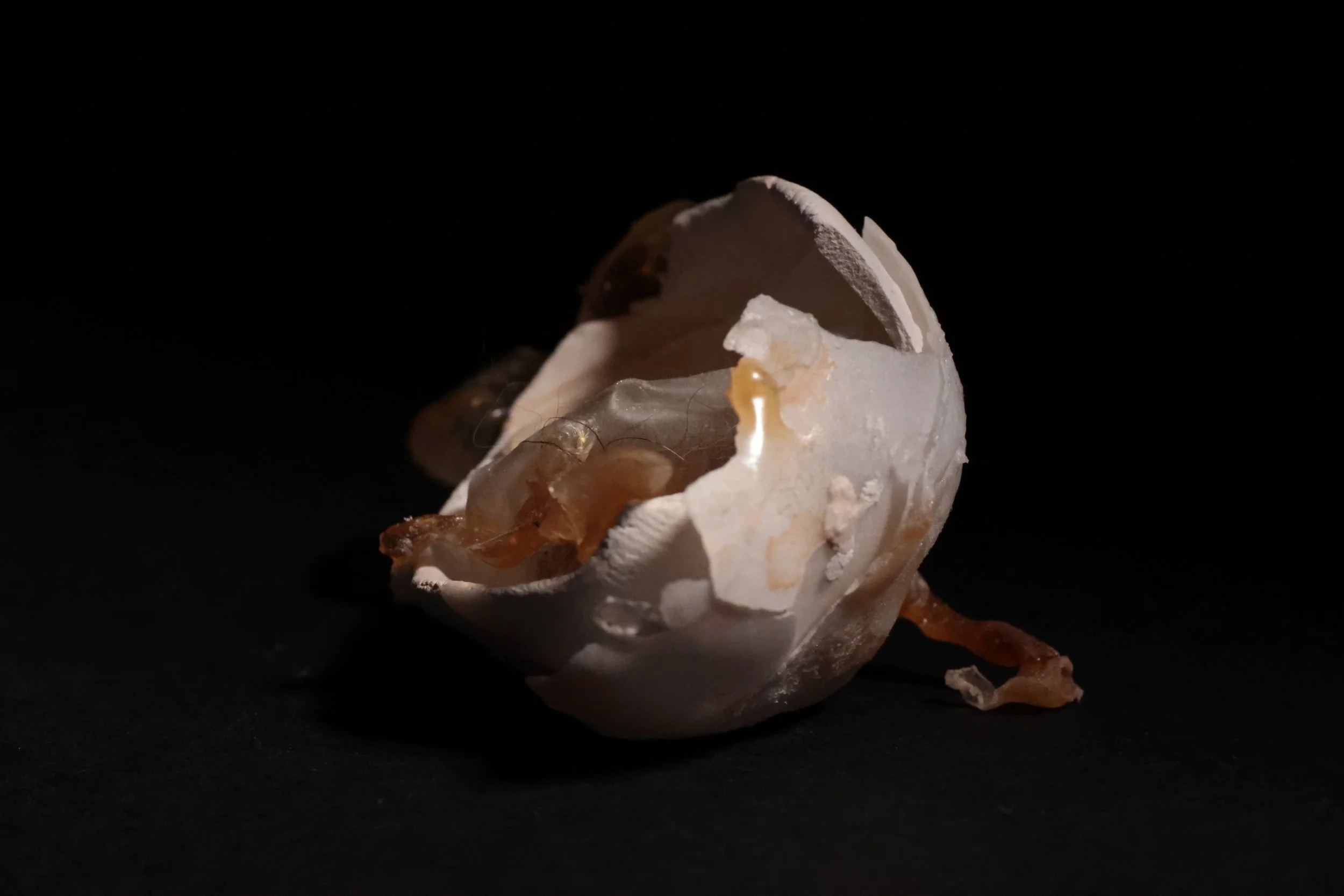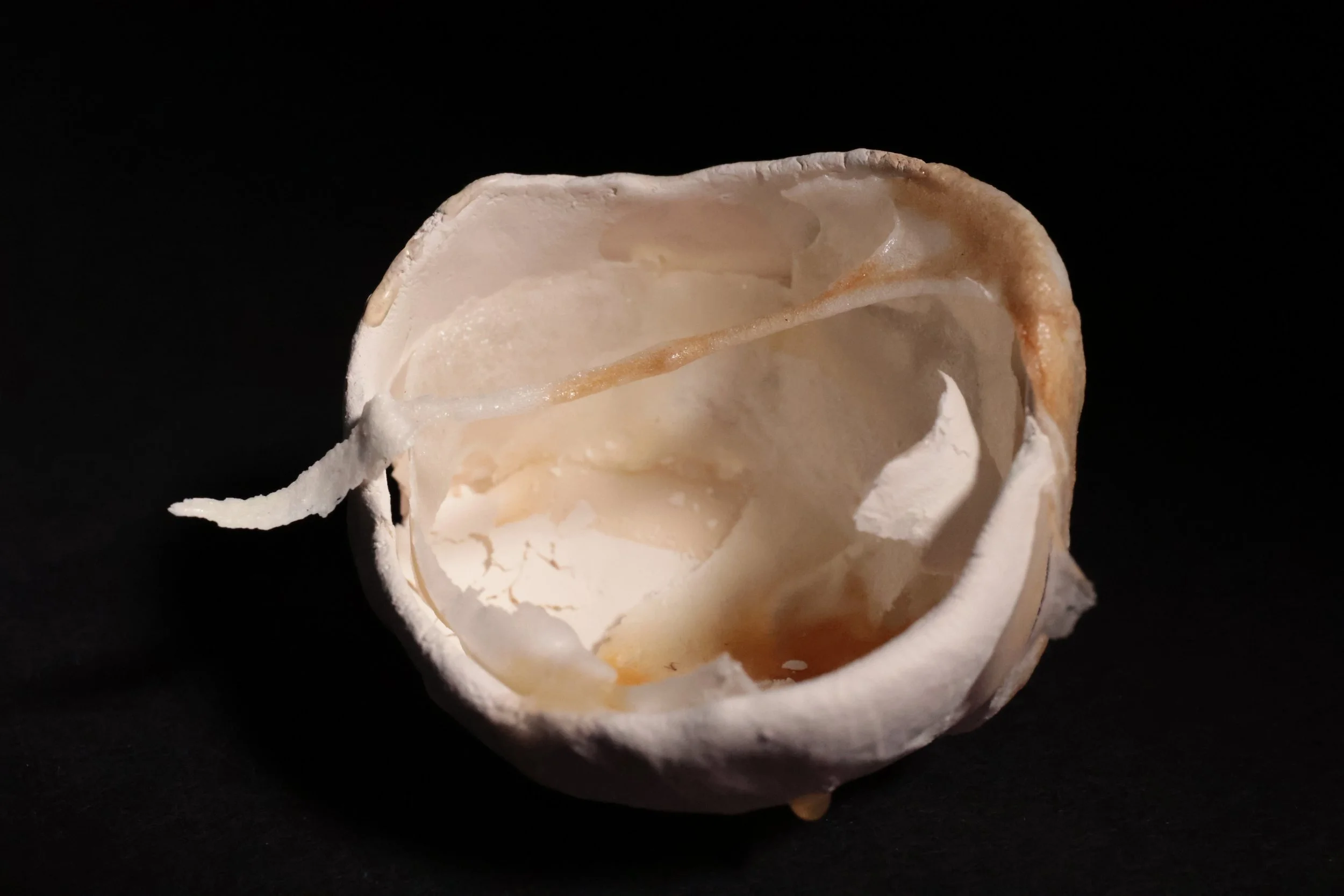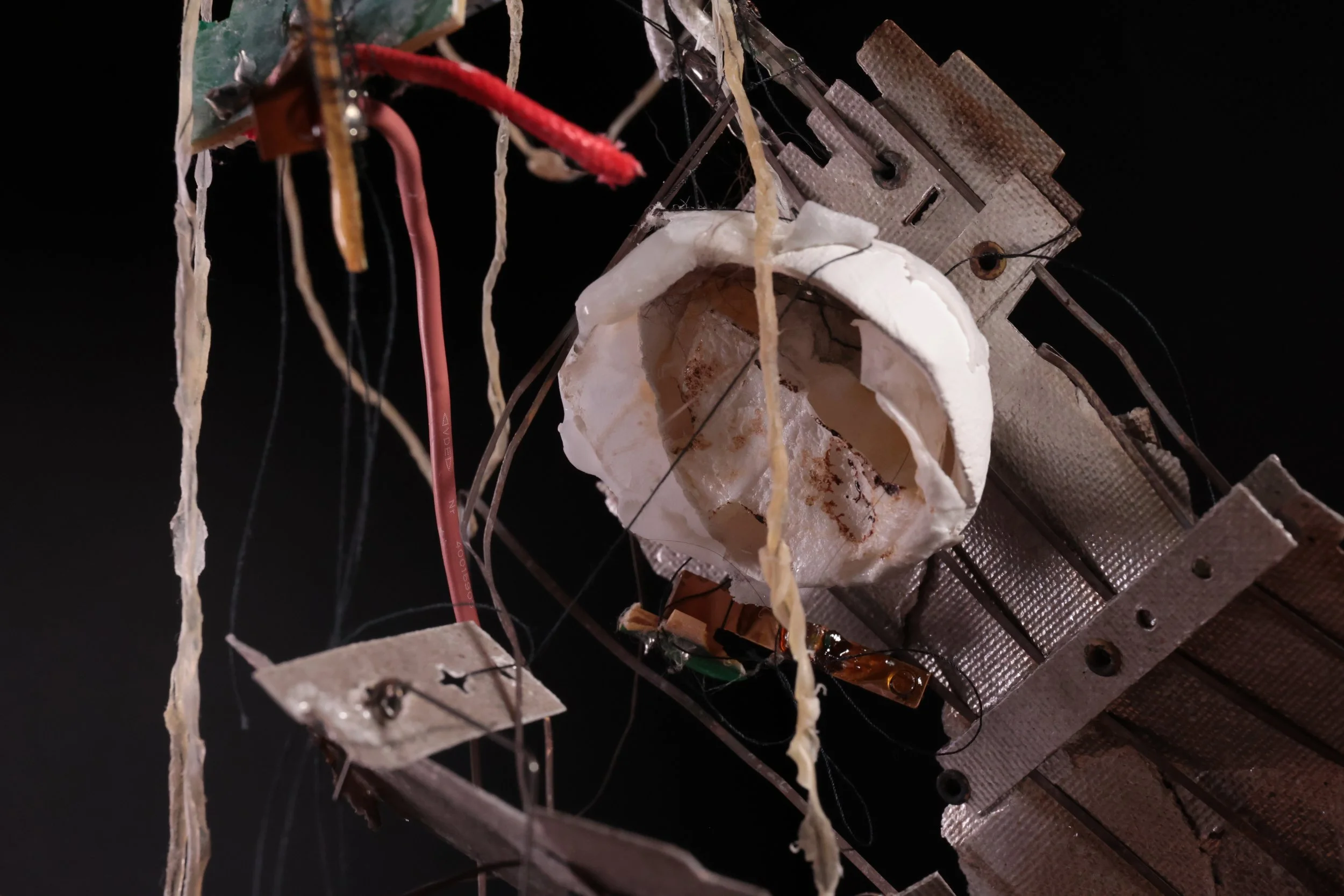
The Unheard
Exploring entanglement between organic forms and broken fragments of a mechanical system. These compositions are an attempt to remove context and location with the objects existing in a dark void suspended from reality.
This research project was an exploration into the therapeutic benefits of sensory exploration with materials combined with narrative to help communicate lived experience. My particular focus centred around the human and system experience and the grief and sorrow that was to follow. I have taken an Auto-ethnographical approach, in particular expressionist auto ethnography, which focuses on:
‘expressing a researchers internal feelings and emotions, presenting personal/ cultural experiences from a thoroughly subjective perspective. Rather than document a physical or empirical reality, expressionist autoethnographies seek to engage readers emotionally and explore the meaning of the storytellers identities, challenges, joys and epiphanies.’ (Adams, Et al 2015) Pg 87
I combined this research methodology with the theory of the felt sense, as described by Peter Levine in his book, Waking the Tiger: Healing Trauma, where Levine explores trauma in relation to the felt sense. He explores traumatic symptoms not being caused by the event itself but how the symptoms stem from the frozen energy that has not been resolved or discharged and remains stuck in the nervous system. He states ‘ through sensations and the felt sense, this vast energy can gradually be decomposed and harnessed for the purpose of transforming trauma.’ (Levine, Peter A et al.1997) Pg 76. This is an interesting theory when combining this approach with arts practice. Through exploring the therapeutic benefits of sensory exploration with materials and narrative, I wonder if becoming aware of my felt sense offers another dimension and awareness to embody my arts practice and experience a sense of peace, connectedness?





